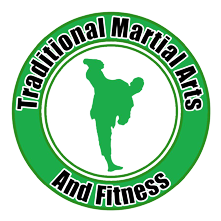Karate Etiquette
Every culture and sub-culture has its own rituals and etiquette you’re expected to follow, and karate is no different. It’s important to follow these practices, as it’s a sign of respect to your fellow practitioners, the instructor, and the sport itself.
Bowing (Rei)
The bow is the most common act of respect. It’s typically done standing with your heels together, so your feet form a “V” shape. Your arms lay straight down at your sides, with your open palms facing yourself. To perform the bow, you slightly bend at the hip, keeping everything else straight.
Bowing is often accompanied by saying “osu” (pronounced oss). This acts as both a greeting, acknowledgement, and sign of respect.
When To Bow
As the most basic form of respect, bowing is done for various reasons.
You’re expected to bow whenever you enter or exit the dojo. This should be done while facing the inside of the dojo. It’s a sign of respect, and a good moment to step into the karate mindset before class.
It is also common to bow at the start and end of each class. This is traditionally done while in seiza (or a kneeling position), and involves two different bows each time.
Shomen Ni Rei: Often translated as a bow to the front. This stems from the tradition of adorning the front wall of the dojo with important cultural items, like images of karate founders and flags.
Sensei Ni Rei: This is a bow to the sensei (or instructor), and is meant to thank them for teaching the class.
Bowing is a common way of greeting others in Japan, so it is customary to bow when greeting other karatekas. This is especially important when greeting a more experienced or senior practitioner. This would be done instead of a “hello”.
When practicing kumite, it is important to bow whenever you face a new opponent. You should bow once before beginning to spar, and once again when the spar is over. This simple act of respect keeps the sparring professional, and prevents the attacks from feeling personal.
It is also common to bow when acknowledging the sensei. Once you start practicing karate, you will quickly find yourself bowing and saying “osu” instead of “yes” and “okay” when addressing the instructor. You might even find yourself accidentally saying “osu” in other contexts outside of class, getting you confused looks from the people around you.
Lining Up
Karate classes typically begin and end with students lining up on one side of the dojo to begin bowing. Your place in the line is important, and you should position yourself based on your seniority. This means the line will often go from white belt to black belt, and each colour group will be organized by the karatekas’ experience.
It’s important to note that when visiting other dojos, you are expected to show humility by standing at the least experienced position based on your belt’s colour. Even if you have more experience than the people of your belt colour, you should still show them respect as a guest.
These lines form when the instructor gives the command, so you should hurry when told to move or line up. Walk quickly, jog, or run to get to your position as soon as possible. Not only does this show respect to the instructor, but it helps the class flow more quickly so you have more actual training time.
Finally, if you show up late to class and people have already lined up, you should simply sit in a kneeling position near the dojo’s entrance. Stay quiet, and wait for the instructor to tell you to join in.
General Etiquette
There’s some other general etiquette that can be applied to most martial arts. These are meant to keep classes focused and help people stay safe.
Stay Quiet: Just like in school, it’s considered impolite to talk to others when the instructor is speaking. Try to stay quiet and focused on the lesson at hand. You should also silence your phone to avoid interrupting the class.
Be Hygienic: Just like in any other environment, it’s important to maintain good hygiene. Be sure to keep your karate uniform (often called gi) clean.
Remove Jewelry: You should take off any jewelry, including watches, before a class. Not only could you damage the items, but you risk injuring yourself and the people around you by wearing them.
Now that you know more about karate etiquette, you should consider signing up for one of our beginner-friendly classes at Traditional Martial Arts And Fitness. We offer sessions for all age groups and have classes all throughout the week. Send us an email at info@martialartdxb.com or call us at +971 4 430 1011 to schedule your first class!
